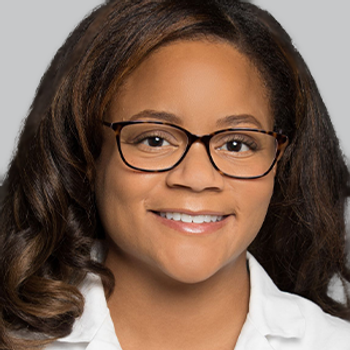
Deep Brain Stimulation Targeting Dentate Nucleus Shows Potential for Functional Recovery in Poststroke Patients

In addition to showing a safe and tolerable safety profile, patients who underwent the procedure showed a 7-point median improvement on the upper extremity Fugl-Meyer Assessment when used in combination with physical rehabilitation.
Investigators at Cleveland Clinic published promising findings from a phase 1 trial (NCT02835443) assessing deep brain stimulation (DBS) of the dentate nucleus (DN-DBS) in individuals with chronic poststroke hemiparesis. All told, patients demonstrated rehabilitative effects and associated neurophysiological gains, further supporting the use of this intervention for recovery of function, even in those in late phases of disability.1,2
Published in Nature, the trial featured 12 stroke survivors with persistent, moderate-to-severe upper extremity impairment who underwent DN-DBS combined with renewed physical rehabilitation. Over 168 participant-months of DBS implant experience and 72 months of DN stimulation experience, treatment resulted in no device failures and no study-related, serious adverse events (AEs). Overall, there was a median decrease of 0.5 points on the upper extremity Fugl-Meyer (FM-UE) Assessment between the pre- and post-surgery time points (month 1 vs 0) for the full sample of participants, further supporting the safety of the surgical implant procedure.
"These are reassuring for patients as the participants in the study had been disabled for more than a year and, in some cases, three years after stroke. This gives us a potential opportunity for much needed improvements in rehabilitation in the chronic phases of stroke recovery," principal investigator Andre Machado, MD, PhD, chair of Cleveland Clinic’s Neurological Institute, said in a statement.1 "The quality-of-life implications for study participants who responded to therapy have been significant."
Otherwise known as the EDEN trial, patients completed months of physical therapy, first with the DBS device turned off for several weeks and then turned on for 4-8 months. The cohort had a mean age of 57.4 (±6.5) years, time post-stroke of 2.2 (±0.7) years, and FM-UE of 22.9 (±6.2). Throughout the treatment period, there were no observed hemorrhages, infections, deaths, or major perioperative complications.
Following the initial decrease on FM-UE between the pre- and post-surgery time points, patients showed a modest 3-point (P = .0004) median improvement across the pre-stimulation, 2-month rehab-only phase (no DBS: month 3 vs 1). When rehabilitation was then combined with DN-DBS, patients gained (improved) an additional 7 points (P = .0005). Finally, during the 2-month, rehab-carryover phase, which consisted of continued physical rehabilitation as DBS was weaned (weekly 25% amplitude reductions over the first month) and then OFF (second month), no further change in FM-UE was observed (median change, 0). At the long-term follow-up, 10 months after the termination of the experimental treatment phase, the median FM-UE score remained unchanged, supporting the durability of the previously realized, treatment-related gains.
READ MORE:
Gains in function, assessed using the Arm Motor Ability Test (AMAT), showed that improvements in FM-UE were accompanied by significant improvements in both the Functional Ability (FA; 0.34 points; P = .0010) and Quality of Movement (0.45 points; P = .0005) subscales. Of note, these patients also showed modest, but significant gains within the FA subscale following cessation of DBS during the rehab-carryover period. Investigators did not identify significant treatment-related effects on the remaining secondary measures, including the 9-Hole Peg Test, the Bilateral Box and Block Test, the Short Form Health Survey, the EuroQol, the Beck Depression Inventory, or the Beck Anxiety Inventory.
"There are currently no effective methods to improve the outcomes of physical rehabilitation for the hundreds of thousands of stroke survivors,” principal investigator Kenneth Baker, MD, of Cleveland Clinic, said in a statement.1 "The results of the study found that deep brain stimulation, paired with physical therapy, improved movement in patients who were more than a year out from their stroke and whose motor improvements had largely plateaued. This tells us the research warrants further investigation in larger patient samples."
A post-hoc analysis analyzed the effect of level of preservation of distal motor function, which was defined as the presence, at screening, of active extension of the wrist and 2 digits plus active thumb abduction/extension, repeatable 3 times over a 1-minute period. Among those who entered the study with at least some distal preservation of motor function (n = 7), this group demonstrated a median gain of 15 points on the FM-UE over the DBS+rehab phase, whereas those with no distal preservation (n = 5) had only a 3-point gain of motor function (P = .007). In addition, post-hoc findings showed no relationship between timing of DN-DBS treatment onset post-stroke and change in FM-UE scores across the DBS+rehab phase.
Using 18f-fluorodexoyglucose (FDG) PET/CT scanning, comparisons of the pre and post-DBS+rehab phase data showed a significant increase in metabolism, after adjusting for uptake time, in perilesional cortex (average change in standard uptake value ratio [SUVR], 0.026 [SE, 0.007]; P = .007). Treatment also resulted in significant increases in 5 of the 6 ipsilesional motor-associated cortical areas (M1, ΔSUVR, 0.039 [SE, 0.011] P =0.007; S1, ΔSUVR, 0.042 [SE, 0.009] P = 0.002; pre-SMA, ΔSUVR, 0.034 [SE=0.006] P =0.0002; dorsal pre-motor, ΔSUVR, 0.028 [SE=0.007] P =0.004; ventral pre-motor, ΔSUVR, 0.030 [SE=0.006] P = 0.0006). These changes were associated with change in AMAT after adjusting for uptake time in the ventral pre-motor cortical region (ß1, 7.61 [SE, 3.04]; P = .04).
"The safety and feasibility data from this early study combined with the potential symptom improvements certainly support the need for additional, larger trials to see if cerebellar DBS is indeed a potential treatment for post-stroke motor impairment,” Brooks Gross, PhD, program director, National Institute of Neurological Disorders and Stroke, said in a statement.1
REFERENCES
1. Cleveland Clinc study shows deep brain stimulation encouraging for stroke patients. News release. Cleveland Clinic. August 14, 2023. Accessed August 14, 2023.
2. Baker KB, Plow EB, Nagel S, et al. Cerebellar deep brain stimulation for chronic post-stroke motor rehabilitation: a phase 1 trial. Nature Medicine.
Newsletter
Keep your finger on the pulse of neurology—subscribe to NeurologyLive for expert interviews, new data, and breakthrough treatment updates.









































